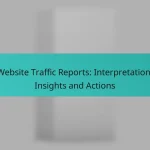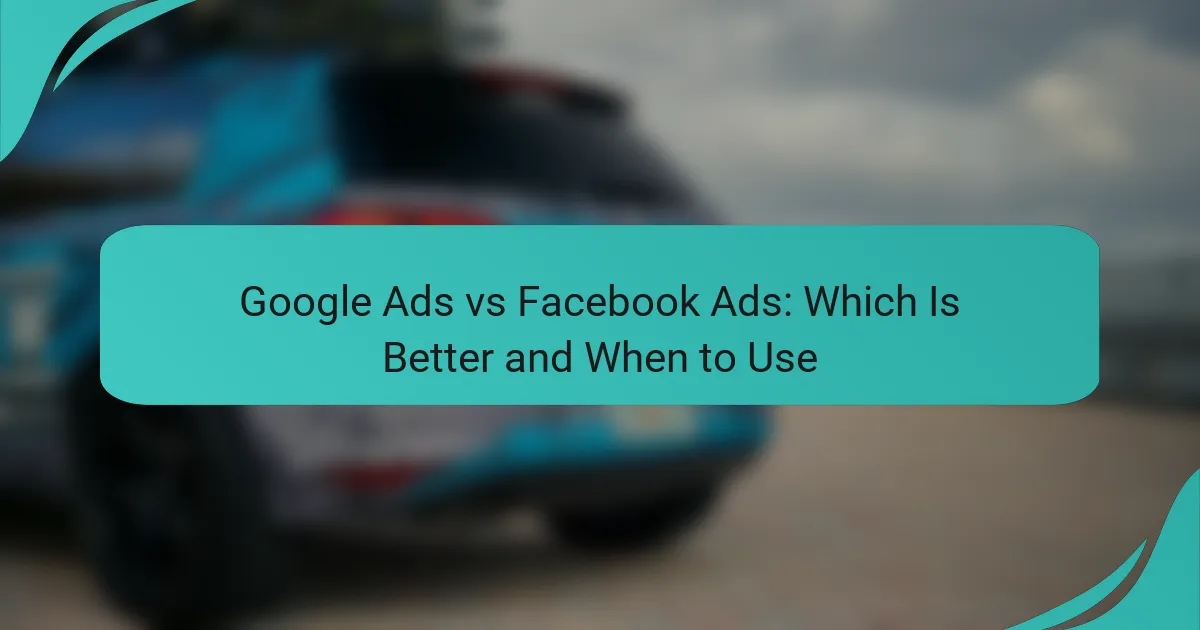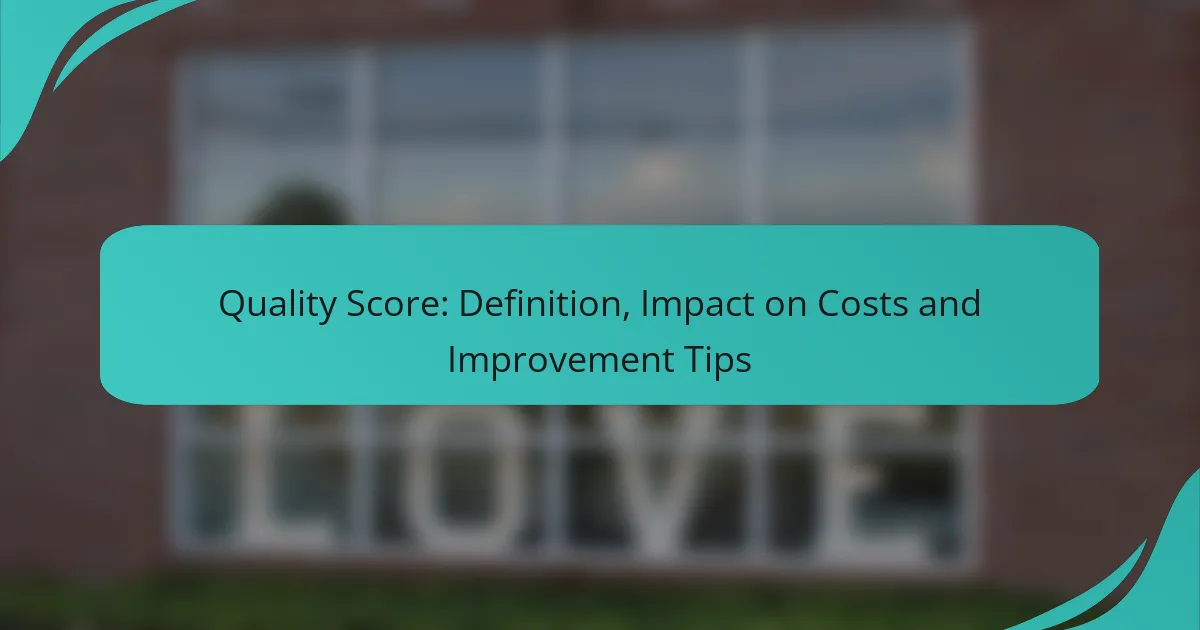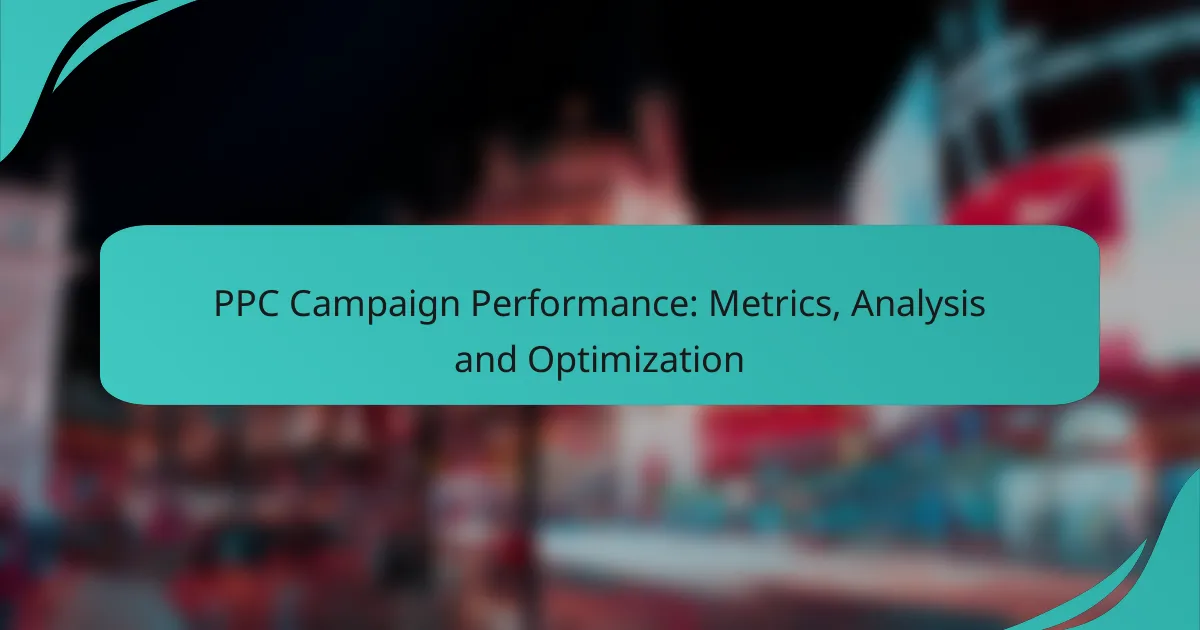When deciding between Google Ads and Facebook Ads, it’s essential to understand their unique strengths and ideal use cases. Google Ads excels in capturing high-intent customers actively searching for specific products or services, making it a powerful tool for driving immediate traffic and conversions. In contrast, Facebook Ads are better suited for building brand awareness and engaging a broader audience through visually appealing content, particularly during retargeting efforts.
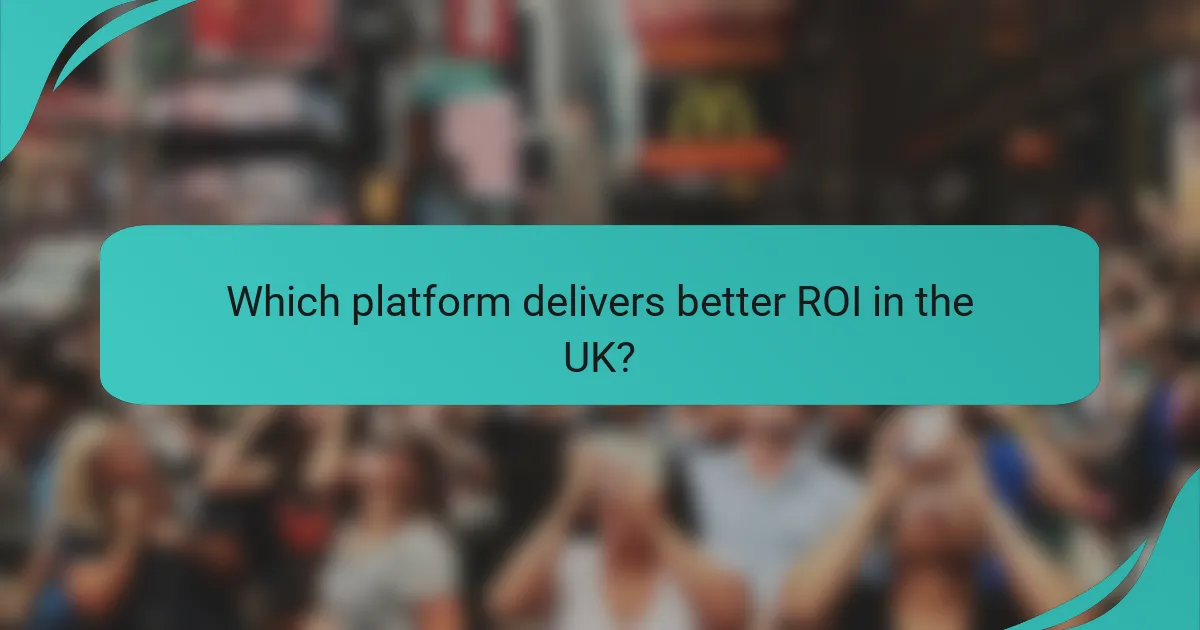
Which platform delivers better ROI in the UK?
In the UK, Google Ads typically provides a higher return on investment (ROI) when targeting users with clear search intent. This is due to its ability to connect advertisers with potential customers actively searching for specific products or services.
Google Ads generally offers higher ROI for search intent
Google Ads is particularly effective for capturing users who are already interested in making a purchase. When users search for specific keywords, they are often further along in the buying process, which can lead to higher conversion rates. For example, businesses in sectors like travel or retail often see a significant boost in sales when utilizing targeted Google Ads.
To maximize ROI with Google Ads, focus on keyword research and ad copy that aligns closely with user intent. Regularly monitor and adjust bids based on performance, and consider using ad extensions to provide additional information and improve click-through rates.
Facebook Ads excels in brand awareness and engagement
Facebook Ads is designed to build brand awareness and foster engagement, making it a strong choice for businesses looking to reach a broader audience. The platform’s targeting options allow advertisers to connect with users based on interests, demographics, and behaviors, which can enhance brand visibility.
For effective Facebook advertising, create visually appealing ads that resonate with your target audience. Utilize video content and interactive formats to encourage engagement. While the immediate ROI may be lower than Google Ads, the long-term benefits of increased brand recognition can lead to higher sales over time.

When should I use Google Ads?
Google Ads is best utilized when you want to capture high-intent customers actively searching for specific products or services. It is particularly effective for businesses aiming to drive immediate traffic and conversions through targeted search queries.
For targeting high-intent search queries
Google Ads excels at reaching users who are already interested in what you offer. By bidding on relevant keywords, you can display your ads to potential customers at the moment they are searching for solutions, increasing the likelihood of conversion.
Consider using Google Ads when your target audience is likely to use search engines for product research. For instance, if you sell running shoes, targeting keywords like “buy running shoes online” can connect you with customers ready to make a purchase.
When promoting time-sensitive offers
If you have limited-time promotions or events, Google Ads can effectively generate quick visibility. The platform allows you to create ads that appear immediately when users search for related terms, making it ideal for flash sales or seasonal offers.
For example, if you’re running a holiday sale that lasts only a few days, using Google Ads can help you reach customers actively looking for deals during that time. Ensure your ads highlight urgency, such as “Sale ends soon!” to encourage immediate action.

When should I use Facebook Ads?
Facebook Ads are ideal when you want to reach a diverse audience and engage users through visually appealing content. They are particularly effective for brand awareness and retargeting efforts, allowing businesses to connect with potential customers at various stages of the buying journey.
For building brand awareness among a broad audience
Using Facebook Ads for brand awareness helps you reach a wide demographic, making it suitable for businesses looking to introduce their products or services. The platform’s extensive targeting options allow you to tailor your ads based on interests, behaviors, and demographics, ensuring your message reaches the right people.
Consider using eye-catching visuals and engaging copy to capture attention. Ads can be optimized for impressions or reach, allowing you to maximize visibility. A common practice is to allocate a budget that allows for several weeks of exposure, which can help solidify brand recognition among your target audience.
When retargeting website visitors
Retargeting with Facebook Ads is an effective strategy to re-engage users who have previously visited your website but did not convert. By showing tailored ads to these visitors, you can remind them of your offerings and encourage them to return and complete their purchase.
To implement retargeting, install the Facebook Pixel on your website, which tracks user behavior. Create custom audiences based on specific actions, such as viewing a product or adding items to a cart. This approach can significantly improve conversion rates, as users who have already shown interest are more likely to engage with your ads again.
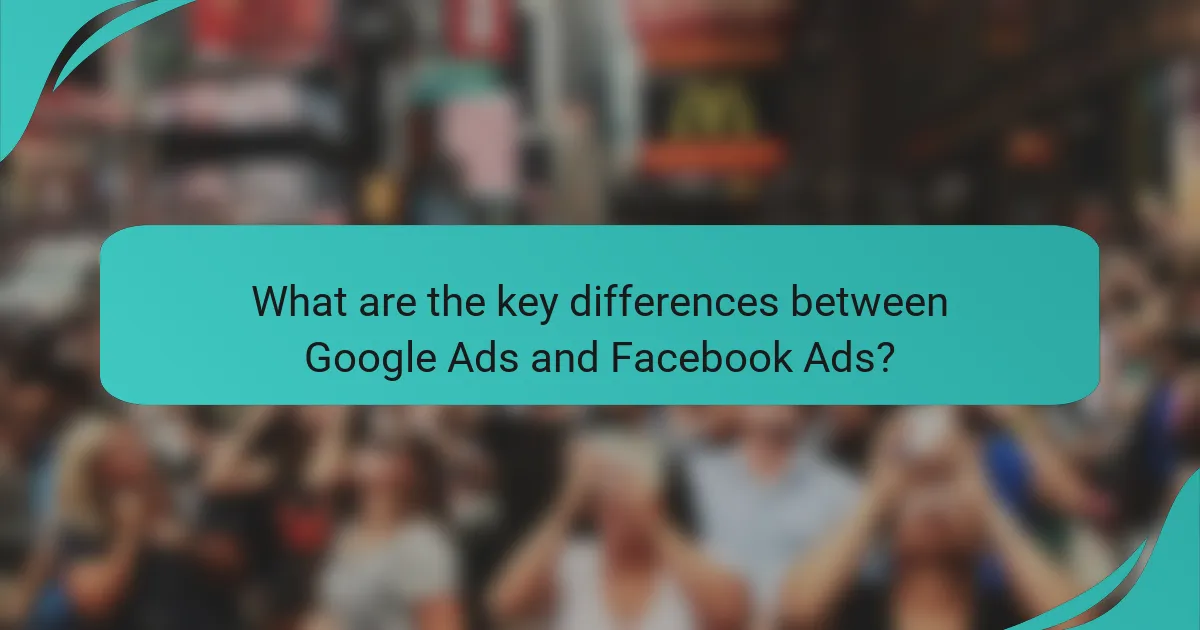
What are the key differences between Google Ads and Facebook Ads?
Google Ads and Facebook Ads differ primarily in their targeting methods and user intent. Google Ads focuses on capturing users actively searching for specific products or services, while Facebook Ads targets users based on their interests and behaviors.
Google Ads focuses on intent-based targeting
Google Ads operates on intent-based targeting, meaning it displays ads to users who are actively searching for specific keywords. This approach is effective for capturing demand at the moment it arises, making it ideal for businesses looking to drive immediate conversions.
For example, if someone searches for “best running shoes,” a Google Ad can appear at the top of the search results, directly addressing that user’s intent. This method often results in higher click-through rates and conversion rates, especially for transactional queries.
Facebook Ads relies on interest-based targeting
Facebook Ads, on the other hand, utilizes interest-based targeting to reach users based on their demographics, interests, and online behaviors. This allows advertisers to create tailored ads that resonate with specific audience segments, even if those users are not actively searching for the product.
For instance, a fitness brand can target ads to users who have shown interest in health and wellness, regardless of whether they are currently looking for fitness gear. This approach is beneficial for brand awareness and nurturing potential customers over time.

How do I choose between Google Ads and Facebook Ads?
Choosing between Google Ads and Facebook Ads depends on your specific marketing goals and target audience. Google Ads is often more effective for capturing intent-driven traffic, while Facebook Ads excels in building brand awareness and engaging users based on interests.
Evaluate your campaign goals and target audience
Your campaign goals significantly influence whether to use Google Ads or Facebook Ads. If your objective is to drive immediate sales or leads, Google Ads can target users actively searching for your products or services. Conversely, if you aim to increase brand visibility or engage users through storytelling, Facebook Ads may be more suitable.
Understanding your target audience is crucial. Google Ads reaches users with high intent, while Facebook Ads allows for detailed demographic and interest-based targeting. For instance, if your audience consists of young adults interested in lifestyle products, Facebook’s targeting options can effectively reach them.
Consider your budget and ad formats

What are the costs associated with Google Ads in the UK?
The costs associated with Google Ads in the UK can vary significantly based on factors like industry, competition, and campaign goals. Advertisers typically pay for clicks, with costs influenced by keyword selection and bidding strategies.
Average CPC ranges from £0.50 to £2.00
The average cost-per-click (CPC) for Google Ads in the UK generally falls between £0.50 and £2.00. However, highly competitive industries may see CPCs that exceed this range, particularly for valuable keywords. Understanding your industry’s average CPC can help set realistic budget expectations.
For example, sectors like finance or legal services often have higher CPCs due to intense competition, while niche markets may enjoy lower costs. Regularly monitoring your CPC can help optimize your ad spend and improve your return on investment.
Budget flexibility allows for various campaign scales
Google Ads offers budget flexibility, enabling businesses to tailor their spending to fit different campaign scales. Advertisers can set daily budgets, allowing for control over overall expenditure while still reaching a wide audience.
Small businesses can start with modest budgets, perhaps around £5 to £20 per day, while larger enterprises may allocate hundreds or thousands of pounds daily. It’s crucial to adjust your budget based on performance metrics and campaign goals, ensuring that you maximize your advertising impact without overspending.
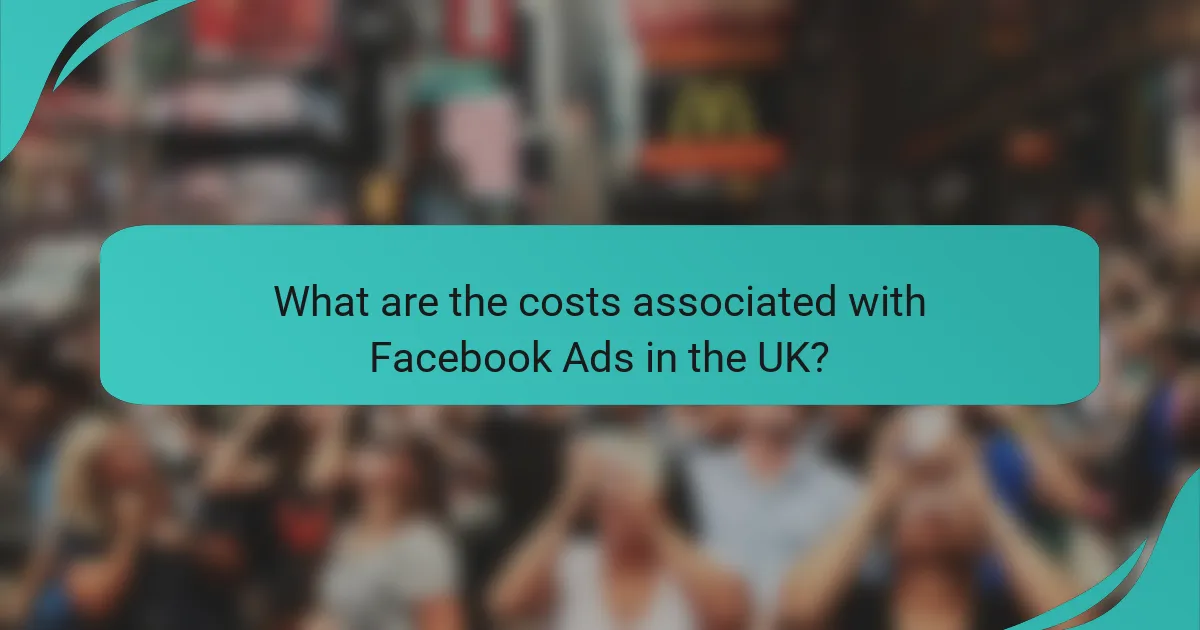
What are the costs associated with Facebook Ads in the UK?
The costs associated with Facebook Ads in the UK can vary significantly based on factors like audience targeting, ad placement, and campaign objectives. Generally, advertisers should expect to invest a reasonable budget to achieve effective reach and engagement.
Average CPC ranges from £0.20 to £1.00
The average cost per click (CPC) for Facebook Ads in the UK typically falls between £0.20 and £1.00. This range can fluctuate based on competition within your industry and the specificity of your target audience.
For instance, niche markets or highly competitive sectors may see CPCs on the higher end of this spectrum. To optimize costs, regularly monitor your campaigns and adjust targeting to improve click-through rates.
Cost per engagement can vary widely
Cost per engagement (CPE) for Facebook Ads can vary widely, often depending on the type of engagement you are aiming for, such as likes, shares, or comments. This cost can range from a few pence to several pounds, influenced by your ad’s relevance and the audience’s interests.
To manage CPE effectively, focus on creating compelling content that resonates with your audience. Testing different ad formats and messages can help identify what drives the most engagement at the lowest cost.
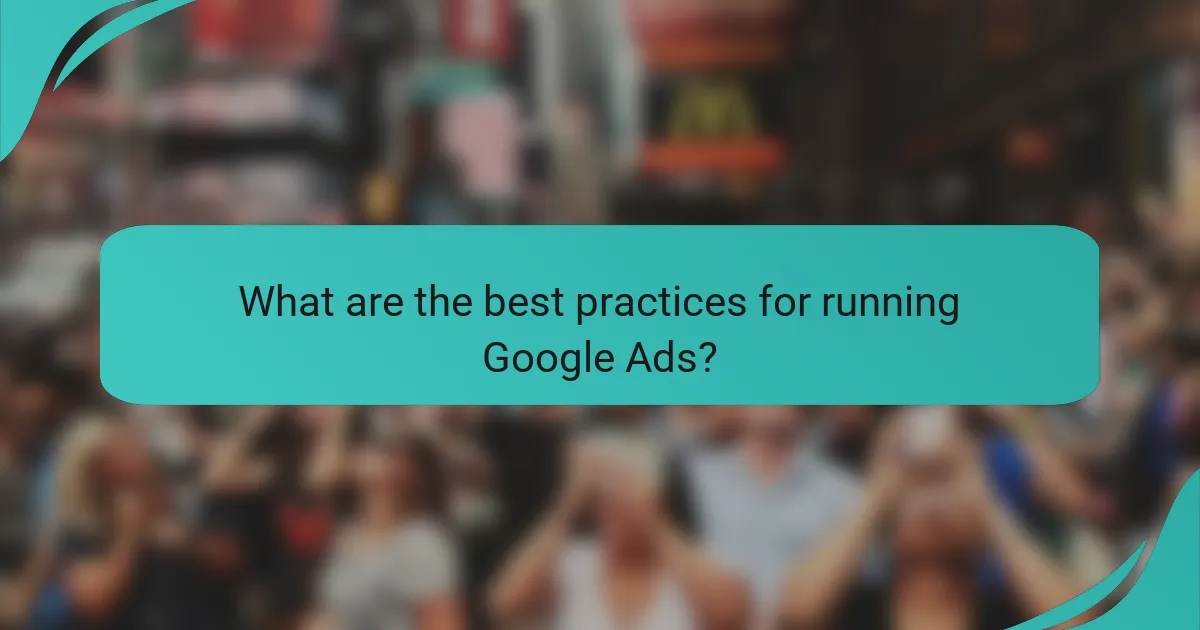
What are the best practices for running Google Ads?
To run effective Google Ads, focus on clear objectives, targeted keywords, and continuous optimization. Implementing best practices can significantly enhance your ad performance and return on investment.
Use keyword research tools like SEMrush
Keyword research tools such as SEMrush are essential for identifying high-performing keywords relevant to your business. These tools help you analyze search volume, competition, and trends, allowing you to select keywords that can drive traffic effectively.
When using SEMrush, start by entering your main product or service to generate a list of related keywords. Pay attention to metrics like keyword difficulty and cost-per-click (CPC) to gauge potential profitability. Aim for a mix of short-tail and long-tail keywords to capture a broader audience.
Regularly update your keyword list based on performance data. Monitor which keywords lead to conversions and adjust your strategy accordingly. Avoid overly competitive keywords that may drain your budget without yielding significant results.



